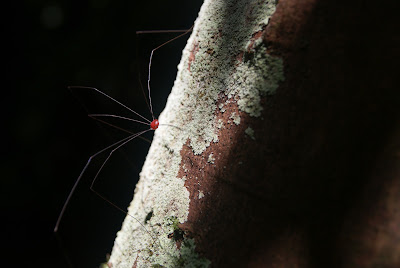
My third grade teacher was big into hands-on projects, the main one being decorating the classroom as the Amazon Rainforest and holding our own Carnivale parade with homemade instruments. We spent weeks studying the ecology of the rainforest and covering the walls and ceilings with butcher paper vines, trees, leaves, and a who menagerie of animals. The teacher even brought in her pet scarlet and green macaws for a day.
In hindsight, this was a huge fire hazard, macaws are not
really intended to be pets, and an incident with the scarlet macaw sparked a
lifelong distrust of birds. However, this also ignited a lifelong desire to
visit the Amazon and see some of these flora and fauna in a fantastic jungle
adventure.
Being on my own in Ecuador seemed like the ideal opportunity
to dip my toe in the vast ecological wonderland that is the Amazon Rainforest.
And while an organized group tour isn’t quite the fantastic adventure my
eight-year-old self may have envisioned, it is the only way to go and see this
protected area. I was also lucky enough
to spend my four-day journey with an excellent group and an incredibly
enthusiastic guide.
One of two protected areas in the Ecuadorian portion of the
Amazon, Cuyabeno reserve covers about 1.5 million acres and, thanks to its
elevation, is home to five different ecological zones. On the Hormiga River,
which flows into the Amazon River and eventually all the way to the Atlantic
Ocean, the reserve is also home to five indigenous groups and hundreds of
species of fauna.
The Caiman Lodge, a little over an hour downriver from the reserve
entrance, is an eco-friendly space of thatch and bamboo, strewn with hammocks,
its observation tower stretching above the surrounding trees. During meals we
were joined by a pair of green Amazon parrots looking to scavenge our leftovers
(and usually succeeding); reintroduced to the wild after being kept as pets,
the birds were accustomed to relying on humans.
The trip included a visit to the local Siona village to see
traditional bread being made and hear a Shaman speak briefly on their customs.
The bread is made entirely from cassava (yuca) root, which we harvested in the
pouring rain. The root is then peeled, cleaned, ground, wrung dry, and made
into a large, thin pancake cooked on pottery over an open flame. After the
meal, the Shaman sat down to explain the local customs and how he (and his
three brothers) learned from his grandfather the ways of a shaman. All told, it
was both touristy and highly interesting.
But the main event, the magically breathtaking main event,
was the wildlife. From being awoken by the calls of howler monkeys to the
ever-present drone of cicadas and calls of birds, we spent four days surrounded
by nature. We paddled, boated, swam, and squished through mud and water in knee
high rubber boots. Massive troupes of squirrel monkeys leapt through trees,
pairs of yellow and blue macaws cruised overhead, anacondas sunned themselves
in branches, pink river dolphins surfaced briefly before cruising downriver, sloths
existed lazily.
It may not have been exactly what my eight-year-old self
pasted all over the walls of a classroom, but it certainly was an awe-inspiring
experience. Definitely worth all the bug bites and early mornings.



































